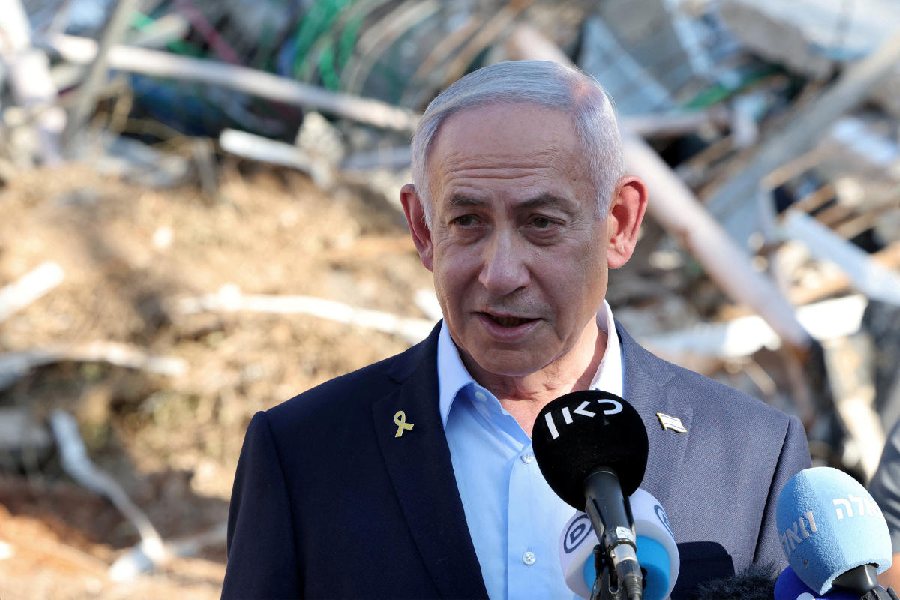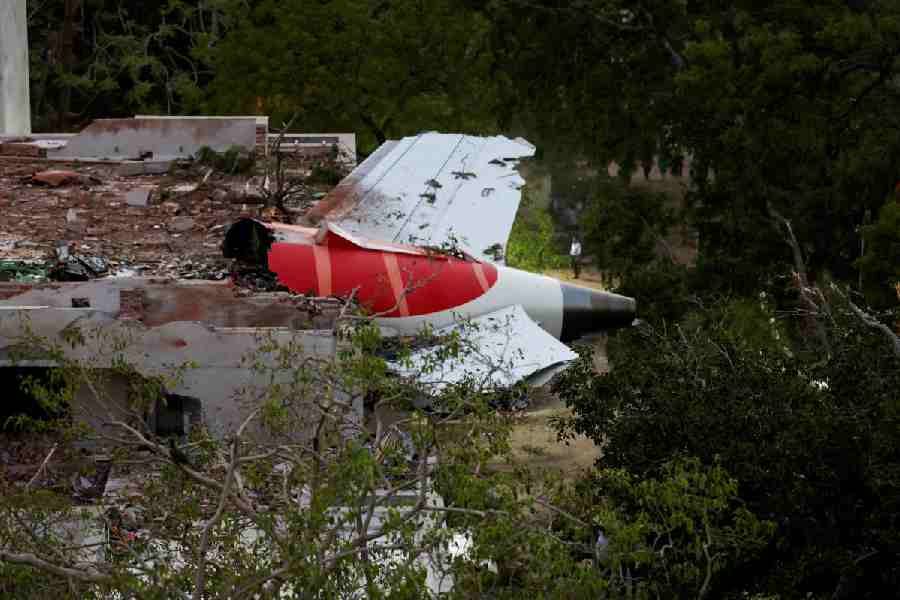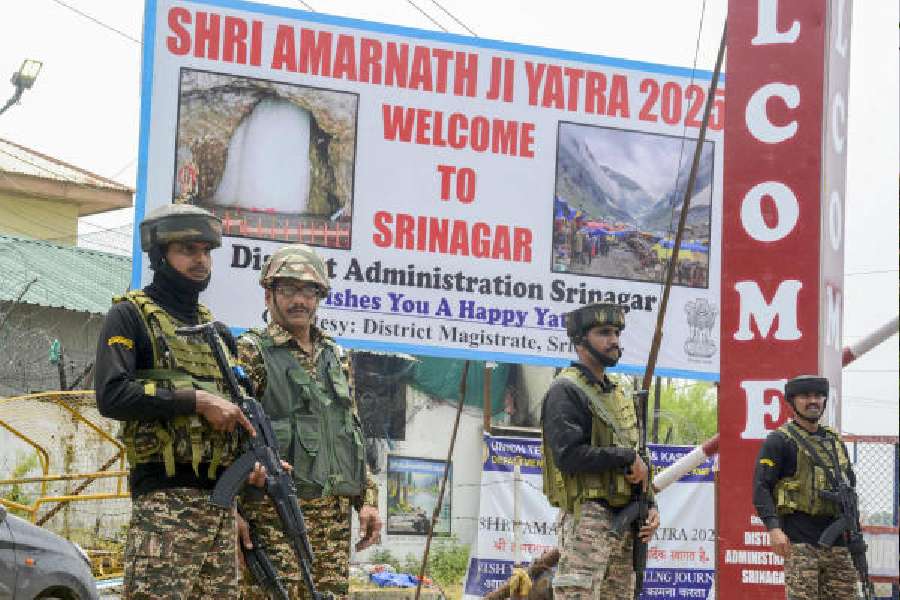 |
 |
| Goutam Ghose steers the camera at Chilapata; Paoli gets ready for a bathing scene. Pictures by Aranya Sen |
Goutam Ghose has been shooting for Moner Manush from dawn to dusk deep inside the thick Chilapata forests of north Bengal, ignoring the cold and the danger posed by the wild. t2 caught the busy director at Lalan’s akhra, designed by art director Samir Chanda, after a hectic day at work...
What prompted you to make a film on Lalan Fakir?
I had thought of making a film on Lalan right after the Babri Masjid demolition because his philosophy was of tolerance and those were very intolerant times. I researched on Lalan and was interested in doing something... not exactly on his life but his philosophy, the cult of the bauls and their way of life. Then recently, I read Sunilda’s (Ganguly) novel Moner Manush on Lalan. Thereafter I studied a lot, met people and felt this was the right time to make a film on Lalan. There is so much intolerance, political and religious, all around.
Is Moner Manush a biopic?
No, it’s not.... You know, I had 19th century Bengal on my mind while writing the script. The Bengal Renaissance is very interesting because we now find that it was restricted to the educated upper and middle classes. It didn’t percolate to the peasantry.... We had some great minds in one century but at that time we did not notice the parallel current of the bauls that was there... their way of thinking was absolutely of a very high order. They were not so-called educated intellectuals. Many say that Lalan was uneducated. I disagree because an uneducated man couldn’t have written what Lalan has. He had his own way of educating himself, which was based on the oral tradition.
Through the ages, there has been a parallel stream at the subaltern level which is secular and liberal. Lalan belonged to this stream. They fought with Hindu and Muslim fundamentalists. Here, women experienced a lot of freedom... this is very fascinating to me. I wanted to tell the story of this extremely high order of philosophy, a way of life which existed parallel to 19th century Bengal Renaissance. To my mind Lalan Fakir is no less than Raja Rammohun Roy.
How are you telling the story?
 |
| Prosenjit as Lalan Fakir with Bangladeshi actor Chanchal in Bolpur |
My film is an encounter between an enlightened urban individual, that is Jyotirindranath Tagore, and Lalan, a man of native wisdom. Though there is no historical record of Jyotirindranath, Rabindranath’s elder brother, ever meeting Lalan, there’s a sketch of Lalan by Jyoti Thakur which suggests that there might have been a meeting between the two. Through their encounter, we come to know about Lalan’s childhood, why he left home, why he was cast out by society and how he formed an akhra in the jungle where all who were looked down upon came to live.
In what light will Jyotirindranath be shown?
Jyoti Thakur was a very refined person. Actually, people in Rabindranath’s zamindari were ill-treated. They were beaten up when they failed to pay taxes. There are several evidences of that; Harinath Majumdar has written about it.... But Jyoti Thakur realised that this wasn’t going to work anymore. He believed in Lalan’s philosophy, which was too mystical for the sophisticated to understand.
How much of the film is based on Sunil Ganguly’s novel?
A lot. But as you know, when we make a film we transform it (the original text). The basic framework is from the novel. I have made changes while writing the script and I have shown the final script to Sunilda. He has liked it. I have based the film on the findings from my research too.
Is the film in flashback mode?
Kind of, yes.... It’s also like a memory. Lalan says a little and then the film goes into flashback. Sometimes, it’s Lalan thinking aloud or Jyoti Thakur imagining something...
Why did you cast Prosenjit?
Because of his eyes. They are very expressive. The kind of preparation he has taken is amazing. That’s why I prefer to work with experienced, professional actors. They have a level of discipline which amateurs don’t have. A professional actor understands the script better. And since I don’t work with amateurs much, I don’t believe in workshops either. I believe in doing rehearsals before a shot. Besides, I read out the script to my actors. I did that to Bumba (Prosenjit). I gave him some books to read.
How many phases of Lalan’s life will you portray?
The film is set in the early 19th to 20th century. I am starting from Lalan’s teenage years when he leaves home.... So, roughly a teenager Lalan to when he is in his 30s, then the 45-50 age bracket and finally when he is very old.
Who plays the teenage Lalan?
Oh, it was very difficult for me to find someone around 15-16 years who would look like Bumba. After scouting a lot, I finally found Zeeshan in Bangladesh. You will be surprised by the resemblance between him and Bumba! He is a good actor too.... There’s Tathoi, a Bangladeshi actress who is playing Lalan’s wife who commits suicide when Lalan returns home after his disappearance.
There’s Chanchal, Champa and Raisul Islam Asad from Bangladesh. Since the film is a joint venture between Rose Valley Productions and Bangladesh’s Ashirbad Films, I had to take a few actors from Bangladesh.... I am very happy with Paoli’s work. She’s a good actor. (Paoli plays Kamli, a widow who lives in Lalan’s akhra.)
Does music play an important role in Moner Manush?
Yes, there are 32 songs. Songs are a part of the conversations. Interestingly, there’s no notation for Lalan’s songs and that’s why I went to Kustiya village in Bangladesh, where Lalan was born, to find out about the notations. I adapted songs that are sung by the fakirs there. Latif Shah and Khoda Baksh have done playback for Lalan in Moner Manush. Shahzad Firdous has written the lyrics. There’s one song that we want to shoot in magic realism. I have given it a polyphonic western notation.
Which part of the film will you shoot in Bangladesh?
We have some very important scenes there. We will shoot on the banks of Padma and Sylhet. These scenes have a certain mysticism and so I have chosen the Padma. There are lots of migratory birds in winter there. Moner Manush should be ready by April-end. We will have the premiere at the Cannes film festival. It will be released simultaneously in Bangladesh and India.
Why did you tie up with a Bangladeshi production house?
To broaden the market. With the Bangladesh release, it will be easier to tap the market abroad. And it’s good for Bumba too... both sides of Bengal will see him.










